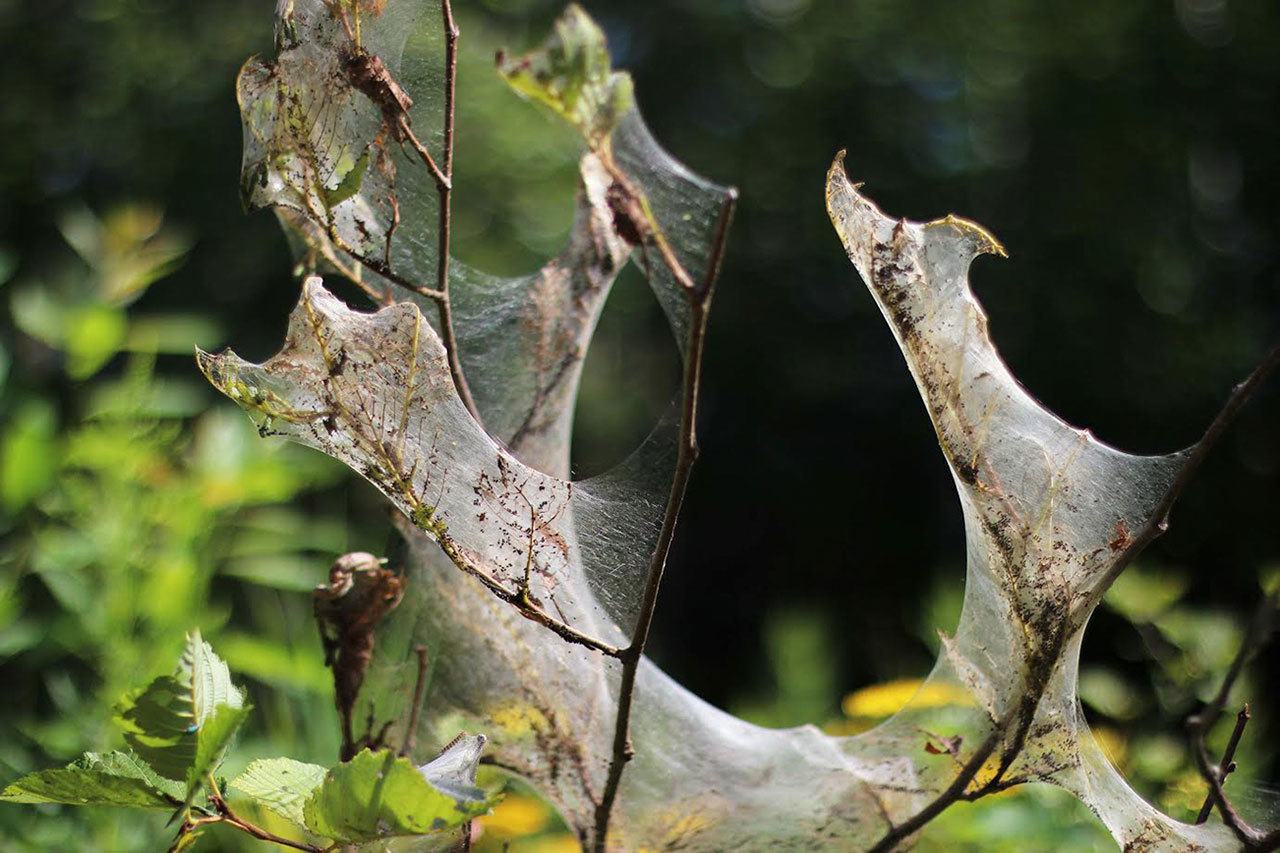Driving home from Olympia the other day, I noticed a lot of “tents” on deciduous trees along Highway 12. These are caused by the fall webworm moth. The tents are formed in August, while another pest, the tent caterpillar, will be found in the spring.
This insect is native to North America and can be found throughout the United States, Canada and Mexico. It has a wide host range which includes more than 100 deciduous trees and shrubs. While inflicting the most damage on shade trees, webworms can also be found in apple and pear orchards. Nut trees seem to be a preferred host. The larvae spin large webs in the trees which may enclose a whole branch.
Conspicuously hairy, the webworm appears rusty tan with a dark, almost black body color. Some populations have a lighter tan color phase.
The insect causes minor defoliation in most forested situations. Large infestations can cause substantial defoliation, which may weaken a tree’s defenses against other opportunistic pests. In ornamental gardens, the webs can cause loss of visual quality.
Generally, population control is not needed, as the biological impact from defoliation is not enough to hurt the tree. Fall webworms are food for many natural enemies, such as birds, whose feeding decreases the population nicely. Paper wasps and parasitic wasps, as well as yellow jackets, also prey on the insect.
Stressed or recently planted trees can be substantially weakened, making them more susceptible to other pests and or diseases.
Direct control when the larvae and colonies are small — such as hand picking them off the trees or cutting out the affected branches and smashing or burning the webs — is best. Use of pesticides is only recommended as an alternative in the spring with young populations.
Bacillus thuringiensis var. kurstaki, (“Btk”), is effective for young caterpillars. Use high spray pressure to break up the web and get the insecticide inside to the caterpillars and the leaves. If the caterpillars are not there, then insecticide sprays are useless. If an insecticide is used, make sure both the tree impacted and fall webworm are listed on the pesticide label. Follow all label directions. Home owners should not attempt to treat trees over 10 feet tall.
Author Linda Lee is a WSU Master Gardener residing in Grays Harbor County.



